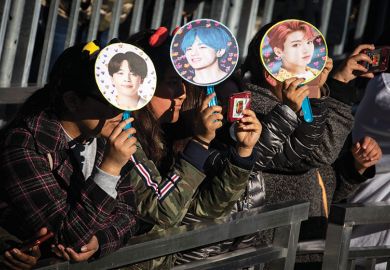What do an audience watching water puppets around a village pond in Vietnam, a tenth-century nun writing in Latin about a woman trapped in a locked cell, and a New York staging of The Phantom of the Opera have in common? The answer is that they are all types of theatre and they clarify the immense challenge faced by John Russell Brown, and the 15 other contributors to this book, in shaping a coherent narrative out of such disparate events. For this is not a reference book but a history. Nor is theatre being seen here in a narrow literary context but as "any performance by actors for other persons" so that practical considerations such as lighting and sound will have to compete for space with developments in playwrighting, acting and architecture while still being part of a coherent argument about the social and political function of theatre.
The volume's four-part structure takes us from "First theatres" (Greek, Roman, medieval, African), through the four key European theatres to 1700, and European and American theatre 1700-1970, to "world theatre" which means oriental theatre plus all theatre since 1970. Brown admits that the standpoint is largely that of "British, European and English-speaking cultures", which suggests that a true history of world theatre is still to be written. Most chapters are exploratory, taking into account recent scholarship which often questions easy sequential versions of theatre history. The "various achievements" of national theatres are seen as being encapsulated in the performance of important plays which are selected as a means of focusing on theatrical and social conditions while acknowledging the pivotal achievement of the playwright. Surprisingly, then, Peter Thomson's chapter on English Renaissance theatre takes as read the thesis that playwrights wrote as they did to accommodate actors so that this period is "primarily a story of actors and patrons and audiences". There is therefore no focus on any of Shakespeare's plays nor on the way these plays relate to the theatres they were performed in. Thus playwrights like Sophocles, Calder"n and Racine are seen as geniuses who changed the way in which humans are understood, while Shakespeare is not. Such a view is not borne out elsewhere in this history where Shakespeare is a pervasive influence.
The shift to world theatre in the last section throws us back to the origins of Indian and Chinese theatre, having left western theatre perched on the threshold of the 1970s. To create any sense of homogeneous narrative to world theatre since 1970, while preserving detail and interest, would seem an impossible task but this is what Brown achieves in the final chapter, the highlight of the book. He looks at the return to visual melodrama in the mega-musical, at the many forms of small-scale experimentation, at the prolific range of venues, yet still explores such issues as funding, the social and political role of theatre, and the relative importance of director, actor and playwright. Theatre is genuinely seen as worldwide in that the work of western practitioners as diffuse as Yury Lyubimov, Richard Foreman and Giorgio Strehler rubs shoulders with the work of Ariane Mnouchkine, Noda Hideki and Suzuki Tadashi. Interestingly, Tokyo is seen as the "new theatre capital of the world" and intercultural theatre as the likely pattern for the 21st century.
This is an attractive and very readable history. Illustrations, carefully linked to the text, enhance the argument. As an up-to-date "celebration of theatre`s greatest achievements", this is a desirable volume.
Ian Mitchell is head of English and drama, Grantham College, Nottingham Trent University.
The Oxford Illustrated History of Theatre
Editor - John Russell Brown
ISBN - 0 19 212997 X
Publisher - Oxford University Press
Price - £25.00
Pages - 582
